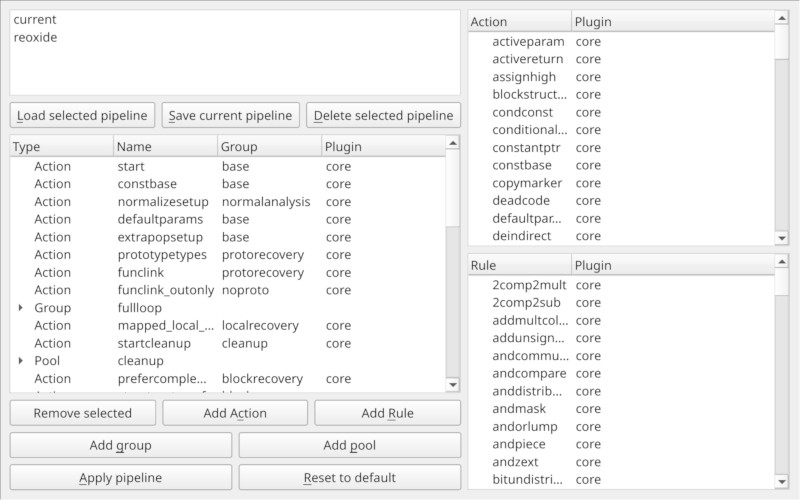Managing pipelines with the graphical user interface (GUI)
The section on the structure of pipeline files describes how you can change the structure through the current.yaml file. The list-rules and list-actions sub-commands of the reoxide command can help you by listing all rules and actions offered by the plugins you have installed. While this works, ReOxide also includes a graphical pipeline manager that communicates with a running reoxided daemon. When installing ReOxide you can install the GUI dependencies:
pipx install reoxide[gui]You can then start the GUI with reoxide-gui, if you have the reoxided daemon running in the background:

The tree view on the lower left has the current pipeline that the decompiler uses for decompiling a program. You can add groups and rule pools and delete nodes to your liking. The right side of the application has the overview of all available actions and rules and the plugins they belong to. You can add actions to the pipeline by dragging and dropping them into the pipeline view, or by using the Add Action button. It works the same way for rules, except you can only add rules to pools. By clicking into the pipeline view in the Group column, you can select the default group that you want to assign to an action.
Afterwards, you can click the Apply pipeline button to send the pipeline to reoxided. Afterwards, you need to refresh all open decompilers manually, to ensure they fetch the new pipeline from reoxided.